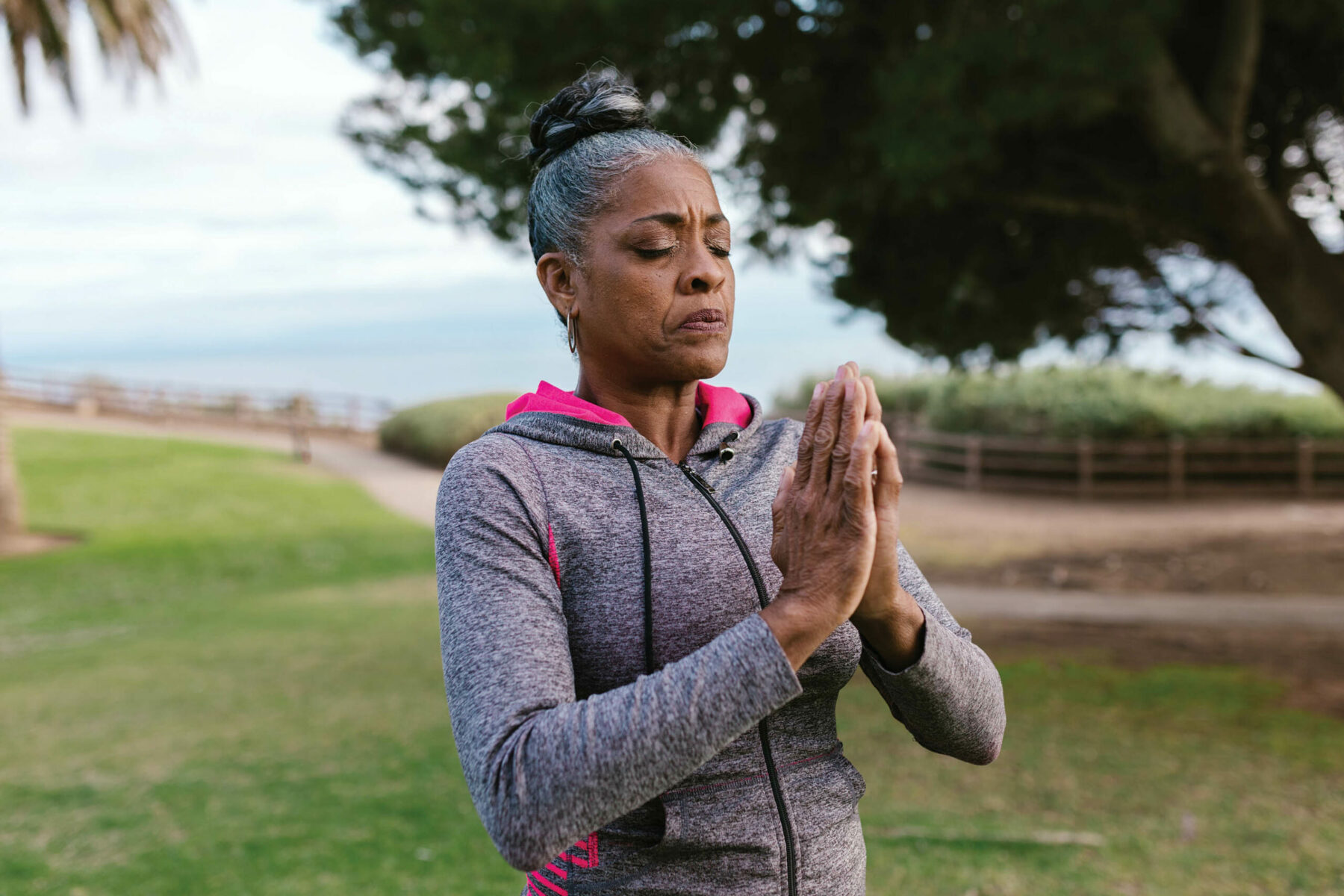How to Achieve Mindfulness During Menopause

There is no arguing about the benefit and importance of exercise for any stage of life, but during the menopausal transition, it can become even more important.
Research indicates that participating in regular exercise can help women manage menopause symptoms. Unfortunately, when we talk about exercise, the discussion gets limited to physical components such as resistance training and cardiovascular activities. The mindfulness aspect of exercise is often overlooked.
Practicing mindfulness can positively impact the physical, mental, emotional and overall quality of life experience of menopausal women. You can work out every day, but if you’re feeling depressed or stressed, which is much more common during the menopausal transition, you’re more likely to have a lower quality of life, which is something no one wants.
There is a lot of research highlighting that mindfulness training such as yoga, tai chi, breathing and meditation can be beneficial in alleviating and managing menopause symptoms and increasing menopause-specific quality of life.
If you’re first thought after reading this last sentence is “I don’t have time to add one more thing to my plate,” I have good news for you — you don’t have to sign up for an hour-long yoga session to get the benefit. Adding mindfulness in small intervals can have big effects. Even five minutes at a time done regularly can be transformative. Research indicates that practicing mindfulness in smaller intervals but more regularly is more beneficial than occasionally doing an hour-long session. In Dr. Jenn Wolkin’s book, “Quick Calm,” she emphasizes this benefit by saying, “The thing about five minutes is, it’s more than zero minutes. Mindfulness—even in small doses—adds up, especially when it’s practiced every day.”

Here are a few tips on how to include mindfulness in your everyday life.
Learn How to Breathe
This may sound silly because we breathe all day. Still, there’s a big difference between breathing to survive and breathing for therapeutic reasons. When you truly know how to take a deep breath, you’ll feel its benefits. The best way to get a full deep breath is to use diaphragmatic breathing. You can also use it in times of high stress or when you feel overwhelmed.
Practice Mindful Eating
Resist the temptation of doing other things while eating (I’m guilty of it, often taking my food in front of my computer to continue working while eating). Focus on your food, the experience of eating, the taste of it and how you feel.
Progressive Muscle Relaxation
This technique reduces stress by alternately tensing and relaxing the muscles. You can do this anywhere without any equipment. Just find a space to stand, sit or lay down, and focus on tensing a specific muscle and relaxing it. Focus on how it feels. This technique makes you check in with your body.
Meditate
Just like mindful eating, the main goal is to be present in the moment instead of having your thoughts everywhere. Guided meditation tends to be the easiest way to incorporate it into your routine because of the prompts and guidance provided by a third party. No wonder the meditation app market has grown so much over the last few years. But if you’re not into downloading another app onto your phone or want to disconnect from your devices, here are a few tips on how to meditate:
-
- Find a place that is quiet. You can sit or lie down. Whatever feels most comfortable and relaxing to you.
- Set a time limit. There’s no rule on how long your meditation should be, but aiming for 5 to 10 minutes for a beginner might be a good start. Once you get comfortable with it, you may want to extend it to whatever time frame benefits you.
- Notice your breath. Allow your breath to be effortless and smooth.
- Let your thoughts come and go. The mind will inevitably wander, but rather than obsessing over “emptying” your mind, be kind to yourself and let your thoughts come and go. Don’t hold on to them. Try to focus your attention on your breath to bring your wandering mind back.
- Finish slowly. When you’re ready, take a moment to notice your surroundings and how your mind and body feel.
Bottom Line
Including mindfulness in your life can make a big difference in how you experience menopause and the challenges it can bring. It can be a critical tool to improve your stress level and overall quality of life. So why not give it a try? You have nothing to lose and so much to gain. There is no right or wrong way to include mindfulness in your life. The point is to find ways that let you check in with yourself. This could be done via yoga, tai chi, breathing, stretching, meditation or any other way that lets you take a moment for yourself.
About the Author

Maria Luque, PhD is a fitness expert, health science professor and menopause researcher with over 20 years of experience. She’s the creator of Fitness in Menopause, a company dedicated to helping women navigate the challenges and rewards of menopause. She holds graduate and post-graduate degrees in health sciences and teaches at the College of Health and Human Services at TUI. Certifications include ACE-CPT, ACE-FNS and CHES.






